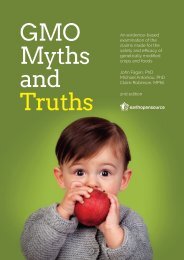1923%20Memoir%20on%20Maps%20of%20Chinese%20Turkistan%20by%20Stein%20s
1923%20Memoir%20on%20Maps%20of%20Chinese%20Turkistan%20by%20Stein%20s
1923%20Memoir%20on%20Maps%20of%20Chinese%20Turkistan%20by%20Stein%20s
Create successful ePaper yourself
Turn your PDF publications into a flip-book with our unique Google optimized e-Paper software.
Sec. ii.] REL'RESENTATION OY PHY SICATJ UE'I'AILS 69<br />
geoloaical origin ant1 up~~ally fount1 in ancient. lac~~ntri~re hanirrs, :i tliff~.rent wplnhol han been<br />
usctl.<br />
Sandy tracts s~~pr)ort.ing desert vc:gc*tation of' sonic kitrtl have irec~n tiircting~~ifihe(l from<br />
bare drift-sa~~d l)y t,he use of a light yellow t.irrt. 'I'he c!haractc:r of the<br />
Slt~l(ly I.I.~L(:~s wit11<br />
vec.ct:~t.iorr.<br />
vegetation fourrtl in such tracts has 11cer1 tnarkeil t)y ~el~aratc* synlliols<br />
rc~11resc~ntitrg its ~)ritrcil,al forrnrj, 7.;~. rec.rIrj or low ~crrrb, wild<br />
pol'lars (by f'nr tile rr~ust f'rc~c~rrc~lrl tre(s gro\vt11), alltl tanlaribks. \?ltt(-r(. the i~~r~-continlled<br />
preserlcc of talirarisl; gro\~tIr has 11~11 to ~III* forn~:rtion of rc~g~rI;rr ' tamnrisIt-ro~ic~~' i. r. hiah<br />
billocl;~ built 1111 by 1roIo1rge(l ~ VPIIIII~II:I~ i(ltr of ~nntl ;~rot~r,l<br />
this c~haracteristic. l'rat.trrr of the grouutl 119s also trren market] hy a srecial symbol. T\')rerever<br />
tlrcsc fornrs of desc~t vegct:ition xvel.e fount1 deacl, tl~rorrglro~rt or' for t,lre most part, the<br />
res1)ective synibolr Ilavc Ilcvn z1ioa.n irr t)lark, illstead of in green, the col(111r tr~rd for livinz<br />
t hc- 1.001 S. (-tc.. of t ilrtlaribk ~ I~I~~ICS,<br />
r<br />
Llrc , same symbols llare been trsetl also to mark patches of vegetation on otherwise hare<br />
desert =tonntl of detritus. gravel t)r clay, anrl to indicate grazing in<br />
Fyml~ole f ~ vccetntion. l mountain tracts I~arrcrr rlse~t here. " 111 mcrnntaine, ho\vever, like the<br />
cc~ntral Nan-s11an n.llerc~ R moister c.linratc allows veeetation to zrow<br />
1)racticnlly evcr~y\rlrere on the slo1,ea 1111 to tlrc ?;tro\v-line, onlv conifer i'o~.est or Irartic~llarly<br />
rich grazing in tlie valleys has 1)cerr sl~eci:rlly slio\i.n.<br />
It. is obvious that tlre 1i11 its I,c4,\veelr bare drift-san~l are;rs and sancly tracts with<br />
vegetation arc often dificult to determine even alr~~rosimately. The Fame applies alao to the<br />
limits between tire latter and gravel or clay desert with soub. M'herever s~ich limits could<br />
be clearly obsrrved tlrey have been nrarlted t~y fine dottrd lines.<br />
,, I Ire same ilevice has heeu used with articular care for the purrlose of indicatinq the<br />
limits of cultivated groontl (shown green throughout) where observed<br />
1,inlirs of<br />
cultir,,ted zl.ound, at tlie time of survey. Sllecial interest attaches to this record of the<br />
extent of cultivated ground in view of tlre comparatively frequent and<br />
rapid changes to which cultivatiou throoghout Cllinese Tr~rltistin is subject owing to peculiar<br />
physical and economic conditions. In this respect. a con~parison of the cultivation limits in<br />
particular oases as recorded in the new maps wit.h those shown hy the surveys of the first or<br />
second journey will prove distinctly instructive. 7<br />
Such changes l~econie necessarily far more striliing wlrrre they can be ohsel.ved over a<br />
considerable distance of time, and for this tlie l'zrim basin, especially<br />
Chnnges of<br />
, 111 its southern portion, ofrers plenty of typical evidence. The ancient<br />
sites now found in utterly nraterless n.asks of tlie Talilamak%n and Lop<br />
deserts, and the even more numerous remains of abandoned srttlements and otlrer ruins traced<br />
in the sandy tracts adjoining still extant oases, all bear \vitness to soch changes of the culti-<br />
vated areas within the historical period. The use of distinctive red colour for the various<br />
symbols indicating ancient remains as n~ell as for tlre local names relating to them makes it<br />
easy to gauge the extent of those changes by a glance at the map.<br />
SEC'PION 111.-SYMBOLS AND LOCAL NAMES<br />
Among the symbols and other cartographic entries in tlie map, most of those relating<br />
to works of man conform t,o the system adopted by the Survey of India and do not stand in<br />
For Yirdangs nnd Mesas, cf. aborc pp. 30.17, 7 Compare, e.17.. the cultivated are= of the oases<br />
63; for arouod sliowing them in typicnl formations frorn Gima to Khotnn in tho map of 1900-01 with<br />
see e.9. Sheet No. 32. I-D. 3. those shon.11 in Sheet No. 9. A. 1, 8-1,. 2;ortho.e irom<br />
The insertion of these vegefatlon ~yrltbols Chira t.0 Keriya in Sheets Nos. 27. D.4; 32. A-C. 1 of<br />
on snch ground 11as not been systematically made the 1006-08 maps with Sheet No. 14. B, C. 2, 3. D. 3; or<br />
thronghoat (see e. g. Sheets 37, 40), descriptive en- Cbnrchan in Sheet Xo. 46. C. 4 of 1966-08 with<br />
tries having often been used instead. Sheet No. 22. C. D. 4.






